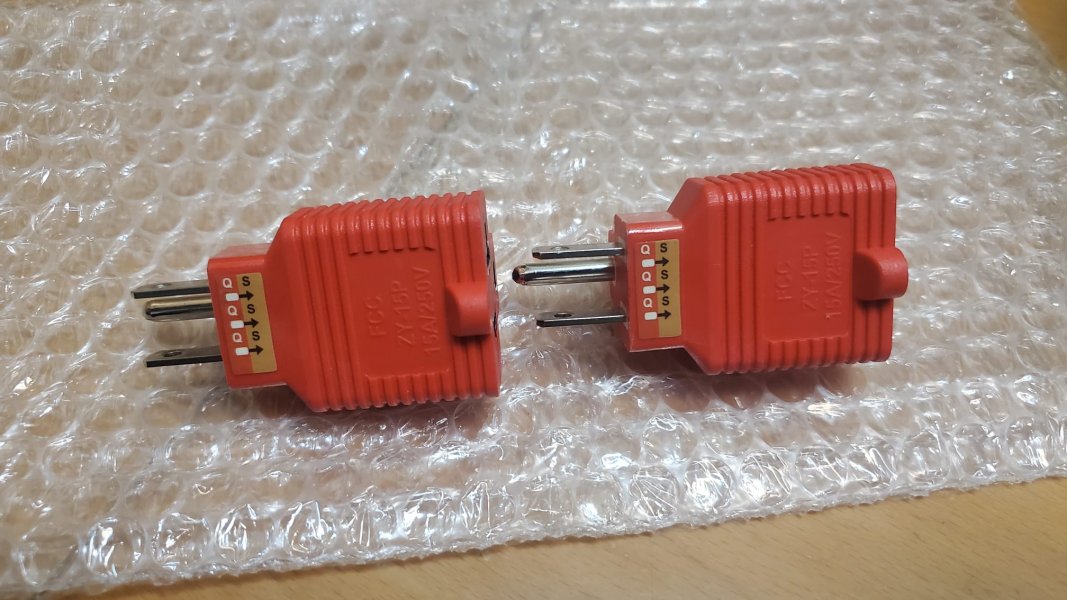Here are my observations. I currently have QSA outlets, a Jitter, and now a complete loom of QSA-Lanedri power cables powering each of my most important components.
The efficacy of QSA treatment is predicated on a variety of factors including:
1) Level of treatment applied. With respect to outlets, fuses, and Jitters, as you go up the line (...Red, Red-Black, Silver, Gold), the level of treatment has been intensified and so the impact of treatment is greater. With respect to QSA-Lanedri cables, there are currently only 2 levels of treatment and that is Revelation and Infinity.
2) Mass of conductor. The larger the mass of conductor that QSA treatment is applied to, the greater the impact of treatment. You already know what treating a Power Jitter sounds like since you have one. The mass of conductor in that Jitter is roughly the same as in an outlet is my guess. The mass of conductor in a 10awg power cable is significantly greater and in a 6awg power cable is greater still. This is why even for a tiny device that draws 1-2 watts, powering it with a 6awg Spectra power cable can result in massive improvement. Should you ever hear the impact of an Ultimatum speaker cable, which is comprised of massive 4/0 (0000) AWG conductor, you will understand why QSA went to great lengths to use wire like this because the level of improvement is almost beyond words to describe.
3) Proximity to component. The closer a QSA-treated product is to a component, the greater the effect. This is why something like a fuse which has only a small amount of conductor can have such a significant impact since it sits at the heart of a component. Your Jitter is so much further upstream that it's impact should be less but because it has so much more conductor, the net impact is probably roughly the same (probably greater). Between an outlet and a Jitter, while they probably have roughly the same amount of conductive material, because the Jitter is closer to the component, it probably has an overall greater effect. I have both a QSA outlet and a Jitter and that is my assessment.
Adding QSA-treated items to your audio chain will have an additive impact. If you score the relative net impact of an outlet as a 3, as an example, then the relative impact of a Jitter might be a 3.5, a fuse somewhere between a 3-3.5, and a power cable a 10, then you can expect the overall impact to have a magnitude of all of those things added together. If you go Red, the magnitude of impact will be less than Red-Black which would be less than Silver. There is no penalty for mixing Red and Silver. Same thing with Revelation and Infinity. The impact will be additive and there seems to be no saturation effect or diminishing law of return. This tells you how damaging conductors are, that if you replace standard conductor with treated conductor, you are essentially stripping away some of the damage they are causing and the higher the level of treatment applied to the conductor, the more damage you are stripping away resulting in greater conductance (as evidenced by the improved dynamics), lower distortion (as evidenced by greater clarity and transparency) and whatever else QSA treatment may be accomplishing. Whether QSA treatment is filtering noise, I don't know, but noise floor seems considerably lower. Again, these are my conjectures. I have no measurements but these things are very easy to hear.
As you've now dipped your toes into QSA waters and have some understanding of what this treatment can offer in the form of something as tiny as a Jitter, the challenge now is how to get the most bang for your buck with your next QSA item. The benefits of a QSA outlet or in your case, a QSA Jitter that feeds your line conditioner is that these things benefit your system globally. With a QSA-Lanedri power cable, that cable benefits the component it is directly attached to but because it is closer proximity to that component and has considerably greater mass of conductor, as you might guess, the impact is greater. Much greater. If you use such a cable to directly power your Horizon, I'm willing to bet you will think Lampizator had come up with a version 2 of your DAC. Same with your Aries Cerat amps. The impact should not be subtle, especially with the Spectra line. If you use the QSA-Lanedri power cable to power your line conditioner, it will improve everything plugged into your line conditioner. If you value each of the components plugged into your line conditioner equally, this is a good way to go. If there is a component that you value above all else, it would make sense to perhaps apply the power cable to that component. Regardless, the impact of a QSA-Lanedri power cable, especially a Spectra, will be far greater than what you will get with a Jitter, outlet, or fuse.
 www.whatsbestforum.com
www.whatsbestforum.com

 www.whatsbestforum.com
www.whatsbestforum.com
 www.qsa-lanedri.com
www.qsa-lanedri.com

 www.qsa-lanedri.com
www.qsa-lanedri.com



